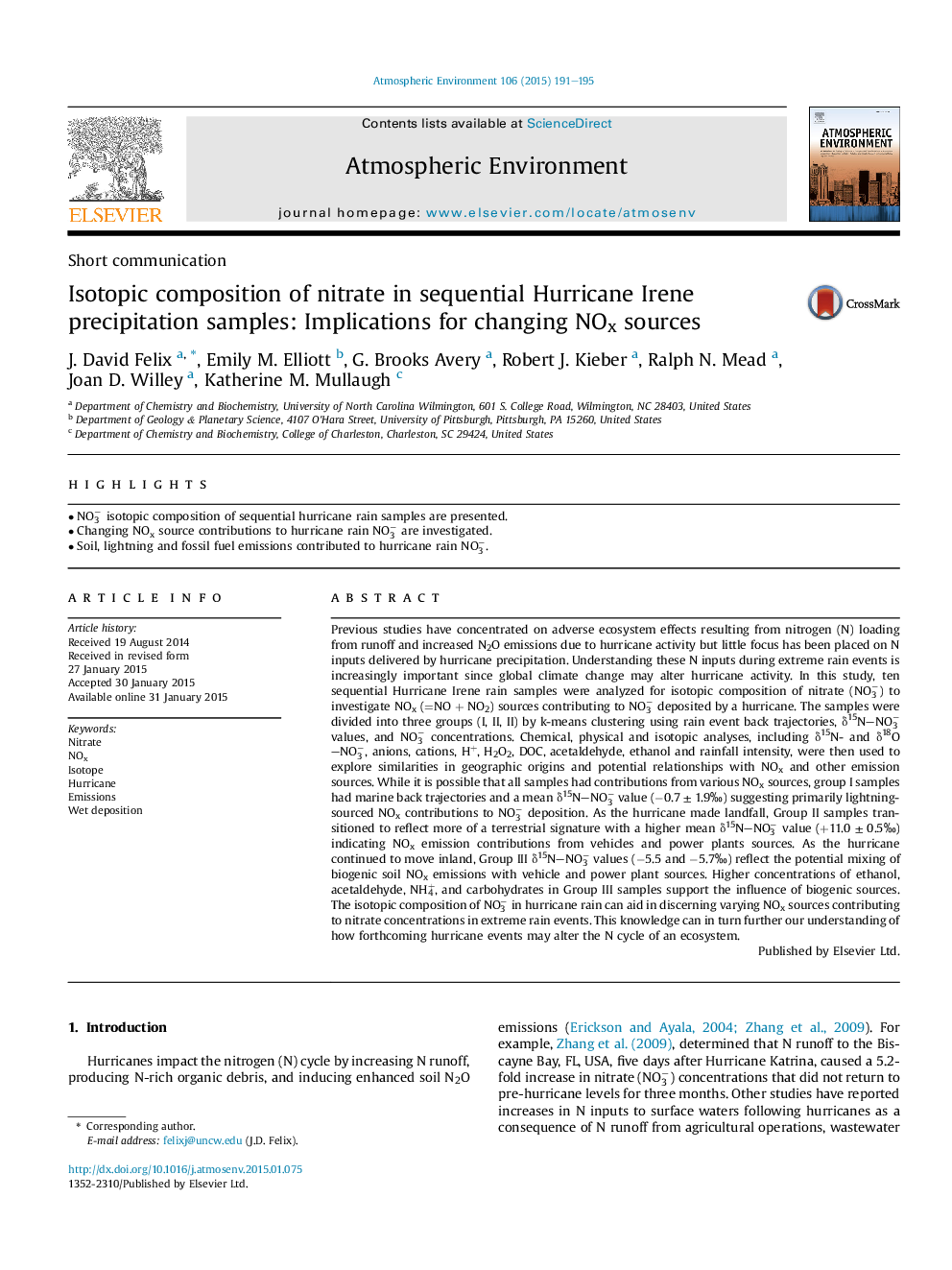| Article ID | Journal | Published Year | Pages | File Type |
|---|---|---|---|---|
| 6338323 | Atmospheric Environment | 2015 | 5 Pages |
Abstract
Previous studies have concentrated on adverse ecosystem effects resulting from nitrogen (N) loading from runoff and increased N2O emissions due to hurricane activity but little focus has been placed on N inputs delivered by hurricane precipitation. Understanding these N inputs during extreme rain events is increasingly important since global climate change may alter hurricane activity. In this study, ten sequential Hurricane Irene rain samples were analyzed for isotopic composition of nitrate (NO3â) to investigate NOx (=NO + NO2) sources contributing to NO3â deposited by a hurricane. The samples were divided into three groups (I, II, II) by k-means clustering using rain event back trajectories, δ15N-NO3â values, and NO3â concentrations. Chemical, physical and isotopic analyses, including δ15N- and δ18O-NO3â, anions, cations, H+, H2O2, DOC, acetaldehyde, ethanol and rainfall intensity, were then used to explore similarities in geographic origins and potential relationships with NOx and other emission sources. While it is possible that all samples had contributions from various NOx sources, group I samples had marine back trajectories and a mean δ15N-NO3â value (â0.7 ± 1.9â°) suggesting primarily lightning-sourced NOx contributions to NO3â deposition. As the hurricane made landfall, Group II samples transitioned to reflect more of a terrestrial signature with a higher mean δ15N-NO3â value (+11.0 ± 0.5â°) indicating NOx emission contributions from vehicles and power plants sources. As the hurricane continued to move inland, Group III δ15N-NO3â values (â5.5 and â5.7â°) reflect the potential mixing of biogenic soil NOx emissions with vehicle and power plant sources. Higher concentrations of ethanol, acetaldehyde, NH4+, and carbohydrates in Group III samples support the influence of biogenic sources. The isotopic composition of NO3â in hurricane rain can aid in discerning varying NOx sources contributing to nitrate concentrations in extreme rain events. This knowledge can in turn further our understanding of how forthcoming hurricane events may alter the N cycle of an ecosystem.
Related Topics
Physical Sciences and Engineering
Earth and Planetary Sciences
Atmospheric Science
Authors
J. David Felix, Emily M. Elliott, G. Brooks Avery, Robert J. Kieber, Ralph N. Mead, Joan D. Willey, Katherine M. Mullaugh,
